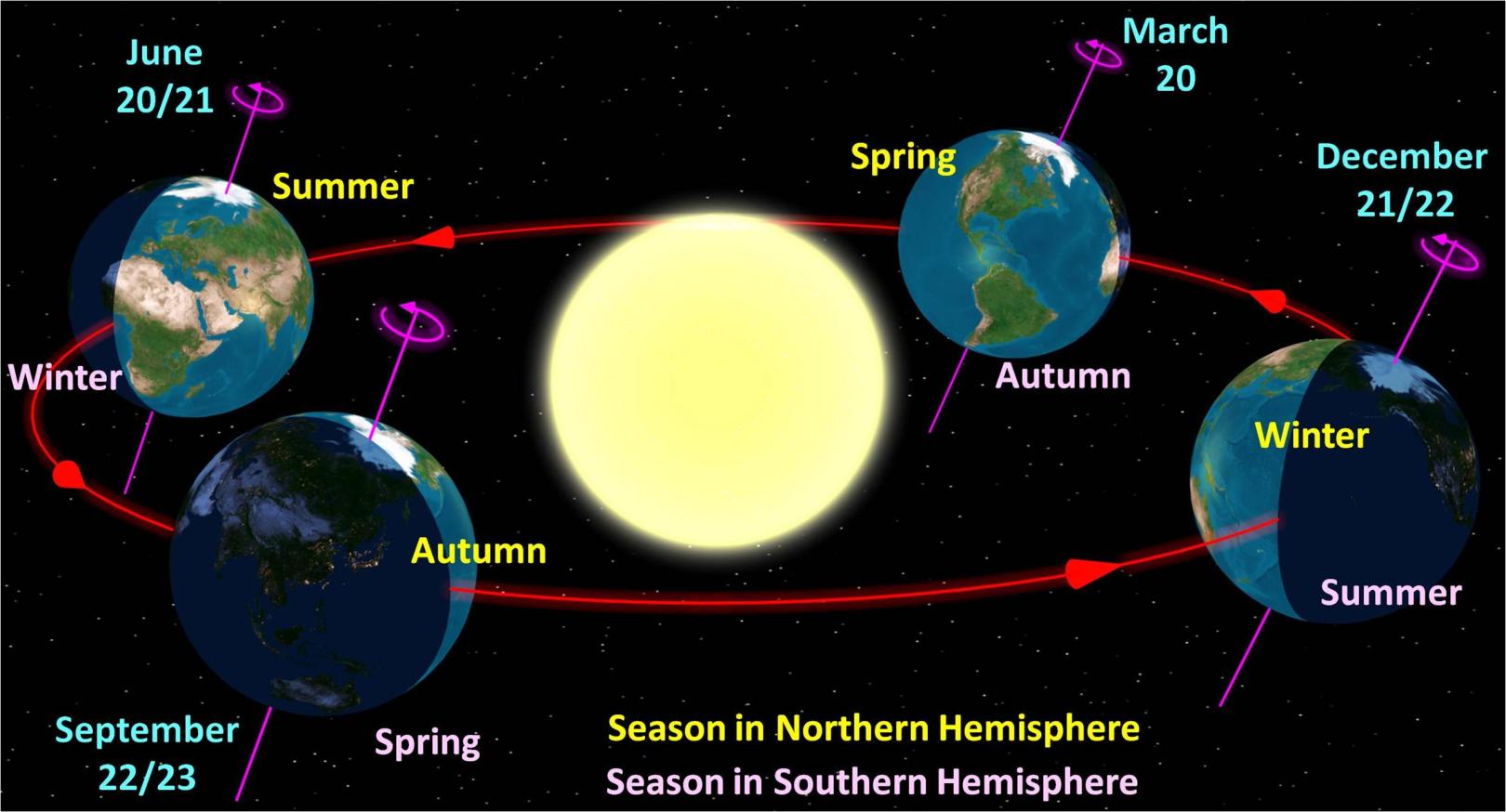
Date:
Want to know the astronomy behind why it’s cold at this time of year? Logically, it must be because Earth is farther from the sun, right? Nope! Actually we’re now closer to the sun in our orbit now than at any other time of year. So why is it cold? Grab your flashlight and let’s find out!
Let’s talk about the northern hemisphere first.
Although Earth is closer to the sun now, that's not why it's winter. We have seasons on Earth because our rotational axis is not perpendicular to the Sun's equator; we're tipped away from vertical by 23.5 degrees. The tilt away from the sun - for the northern hemisphere - reaches its maximum on Dec. 21, the winter solstice. At this time of year, solar radiation is spread over a wider area of the Earth's northern hemisphere surface resulting in a decrease of energy received per square meter. Here’s where the flashlight comes in!
Do this: turn on a flashlight and point it straight down. See the circle of light? Now, tilt the flashlight at an angle to the surface and notice how the circle of light spreads out. The flashlight's energy spreads over a wider area and gets dimmer!
Get it? You've seen this a million times in lots of other contexts. But it's the same phenomenon with sunlight falling on earth. Combined with the minimum number of hours of daylight - again, because of the tilt away from the sun - we don't have the time or the energy input to warm us very much at this time of year. When we get to the summer solstice in June, everything will be reversed and we'll experience summer in the north. The one difference? We'll be at our greatest distance from the sun in early July. How about the in the southern hemisphere? It's the OPPOSITE for the SOUTHERN hemisphere where its now mid-summer. Their half of earth is tilted towards the sun, so they have many more hours of sunlight and the sunlight falls more directly.
So it's not how close to the sun we are that causes seasons on Earth, it's the tilt of our rotational axis that makes the seasons. Same is true for all the other planets. In fact, Mars is tilted the same amount as we are but their seasons are twice as long because it takes Mars almost twice as long to orbit the sun. Don't believe me? Go see!


